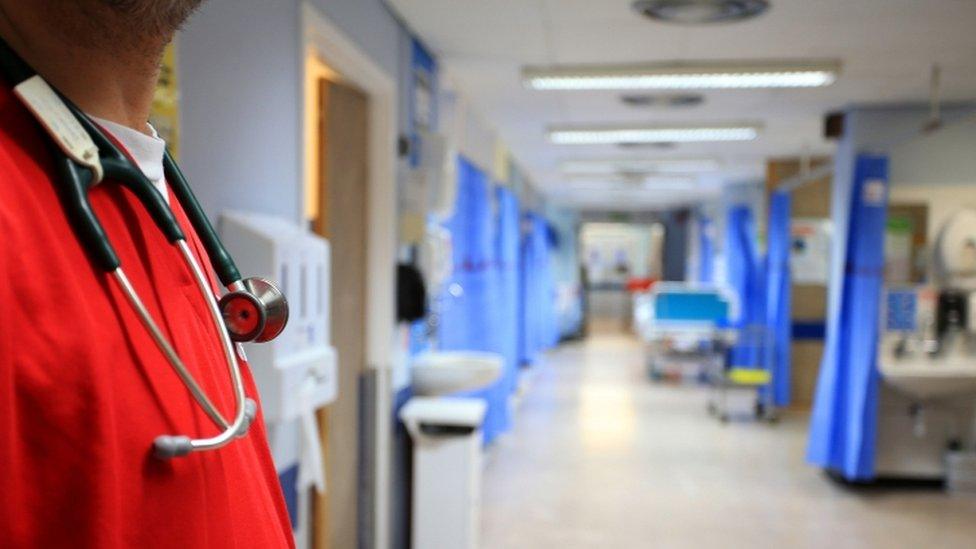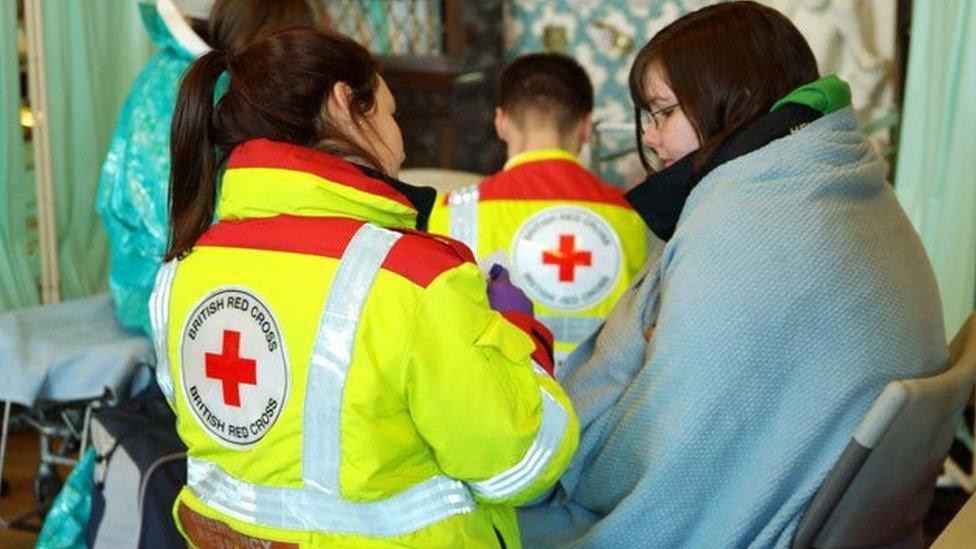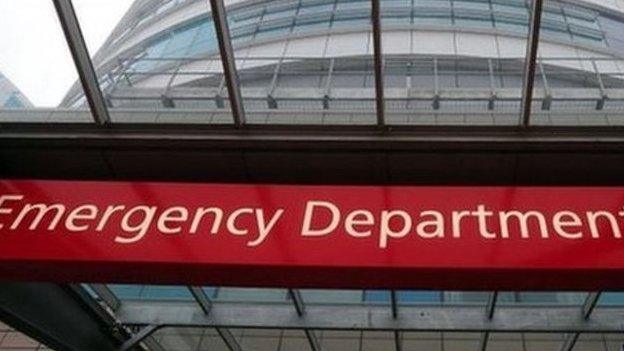Sharp rise in A&Es turning away ambulances
- Published

Overcrowded hospitals in England were forced to close their doors nearly 500 times to ambulances this winter.
The number of diverts was nearly double the level in the previous three winters and has prompted warnings about the pressures facing the health service.
Hospitals said closures were a last resort but had to be done to maintain safety in A&E.
But paramedics warned it had the knock-on effect of slowing their ability to get to the sick and injured quickly.
Doreen Smith, whose mum slipped at home and broke her hip, told the BBC: "It was more than two hours before the ambulance arrived, so my mum was left all that time on the kitchen floor.
"When the paramedics arrived they just said the calls are prioritised, but she's 79 years old."
Failure
Ambulance crews have failed to hit any of their response time targets since May 2015, with latest figures showing that a third of the most critically ill patients wait longer than eight minutes for a 999 response.
Richard Webber, from the Royal College of Paramedics, said that while he was "sympathetic" to the problems hospitals were facing, the diverts were a significant cause of delays in reaching "seriously ill and injured patients.
"There is a double whammy in that not only do crews have to drive further away once a divert is implemented - [but] once that has happened, an ambulance crew will then also need to travel further to get back to their own area to respond to the next call."
The figures, compiled by the Nuffield Trust think tank from official NHS data, showed there were 478 diverts in December, January and February.
That compared to 265 the winter before, 258 in 2014-15 and 225 in 2013-14.
Prof John Appleby, of the Nuffield Trust, said tackling the issue should be an "urgent priority".
"The extra time crews are having to spend on the road is not helping the ambulance service's ability to meet its response time targets," he said.
He also said his research showed there was low morale among ambulance staff, which he said was worrying.
This animation explains how the NHS system works, and what causes hospital blockages
An anonymous paramedic of three-decades told BBC Radio 5live: "We don't get breaks for sometimes up to nine hours into a shift, paramedics rarely get off at the end of the shift on time and the reason is they are stuck at hospitals and have to wait with the patient until they can handover and that can take two-to-three hours sometimes.
"That makes paramedics frustrated, demoralised, tired, anxious - it takes its toll on us personally."
The diverts normally last only a couple of hours and are put in place to allow A&E staff to reduce the queues of patients waiting for treatment.
When a divert is put in place, ambulances are routed to other nearby hospitals.
Five hospital trusts accounted for nearly half of the diverts. These were:
89 - Pennine Acute Hospitals
63 - Worcestershire Acute Hospitals
43 - Northumbria Healthcare
38 - County Durham and Darlington
34 - South Tyneside
Saffron Cordery, of NHS Providers, which represents hospitals, said the trend was "stark".
"Diverting ambulances to other hospitals is disruptive for paramedics and bad for patients.
"The sharp increase in the number of diversions is very worrying. Further steps will be needed across health and social care to address these pressures."
NHS England pointed out many of the diverts would be to hospitals close by so patients were not being sent to hospitals a long way from their homes.
In a statement, the organisation added too many ambulances were being dispatched to simply try to hit targets - and it was now reviewing the system to see if there was a more efficient way of running the service to relieve the pressure.
- Published9 January 2017

- Published7 January 2017

- Published9 June 2015
